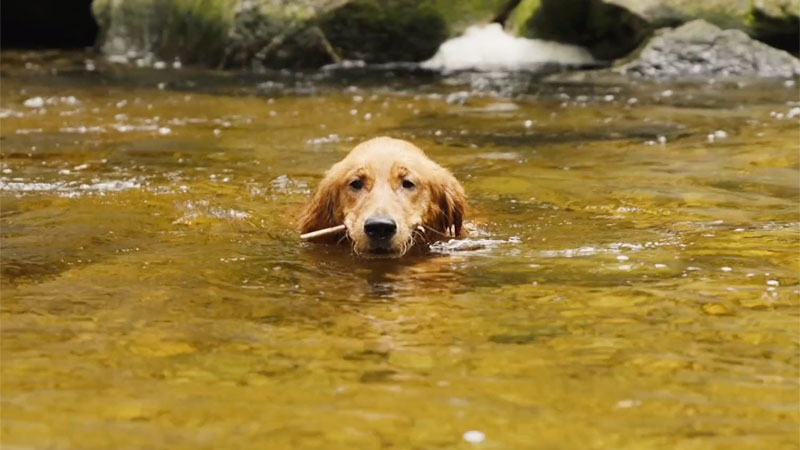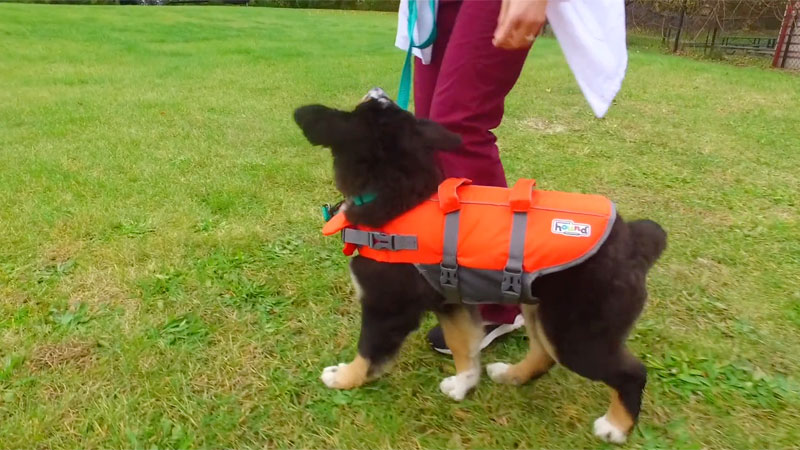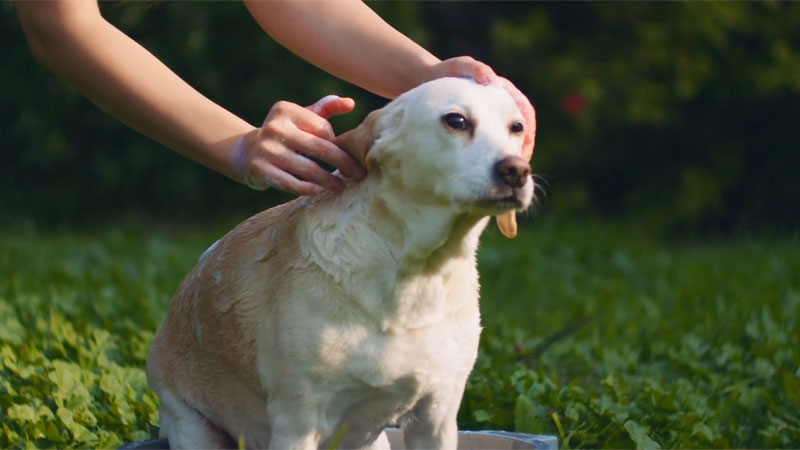rving with pets - paws on board
Water Safety for your Dogs
Welcome to “RVing Today’s Paws on Board.” I’m Dr. Fitz, and this is Georgie. Does your dog love to swim? Today, we’re going to be discussing water safety. There are a few things that you should consider before your dog gets in the water. First, is the water safe for your dog to swim in? There are many factors here that can affect the safety of the water. One is the weather. If it’s extremely windy or conditions are right for strong currents, your pet should not be in the water.
 There are so-called red flag days on lakes and oceans where people should not swim due to the weather and the currents. The red flag days apply to pets, too.
There are so-called red flag days on lakes and oceans where people should not swim due to the weather and the currents. The red flag days apply to pets, too.
Number two, if there are any current notices for the area regarding algae or bacteria in the water, your pet should not swim. For example, in Florida, red tides occur when a specific type of algae blooms. The algae can produce a toxin that’s dangerous to the animals and people. Some ponds can also contain high concentrations of algae that’s dangerous to swim in.
Number three, consider if any other animals are present that could harm your pet. Some that come to mind are sharks, dolphins, and alligators. Although you may know to avoid other animals, dogs can be extremely curious and get themselves into some sticky situations.
Finally, how many other people are present in the area? If there are a large number of boats or other water craft in the area, you may want
to consider keeping your pet out of the water. Your pet may not know to avoid other boats, and other boaters may not be expecting a dog to be swimming in their path. A great rule of thumb is if you wouldn’t get in the water, your pet shouldn’t either. So, how can you keep your pet safe on boats and while they’re swimming? One would be make your pet take breaks. Just like with people, pets can get tired if they’re fetching balls
in the water or swimming around a boat. Make sure to take breaks from the fun so that your pet can rest.
 Next, consider a life jacket for your pet. If your pet’s not experienced
Next, consider a life jacket for your pet. If your pet’s not experienced
around the water, if they’re on a boat, or if they have a medical condition, a life jacket is a must. Even if your pet is an experienced swimmer, you should have a life jacket available, should you need to put one on. There are canine-specific life jackets available. They come in highly visible colors and usually have handles on the top so owners can grab hold of their pet very quickly.
 Finally, offer your dog fresh water regularly. You should try to prevent your dog from drinking swimming water, if able. Ponds and lakes can contain harmful bacteria and parasites, and ocean water is obviously too salty for hydration. During breaks from swimming, offer your dog fresh water to keep them hydrated. An important note to make is to never force your dog into the water. If your pet does not want
Finally, offer your dog fresh water regularly. You should try to prevent your dog from drinking swimming water, if able. Ponds and lakes can contain harmful bacteria and parasites, and ocean water is obviously too salty for hydration. During breaks from swimming, offer your dog fresh water to keep them hydrated. An important note to make is to never force your dog into the water. If your pet does not want
to swim, allow them to stay on land or in the boat. Dogs should be introduced to the water slowly and in a shallow spot.
After swimming, you may want to consider bathing your pet with a gentle shampoo. This removes any salt, chlorine, or mud your pet may have in their coat. Also consider cleaning their ears with a pet safe cleanser to reduce the likelihood of an ear infection. For more information about traveling safely with your pets, visit Paws on Board on RVingToday.tv. Tune in next time for more pet health information. I’m Dr. Fitz. This is Georgie. Thanks for watching “Paws on Board.” Can you shake, shake? Yes, good girl, good job.

